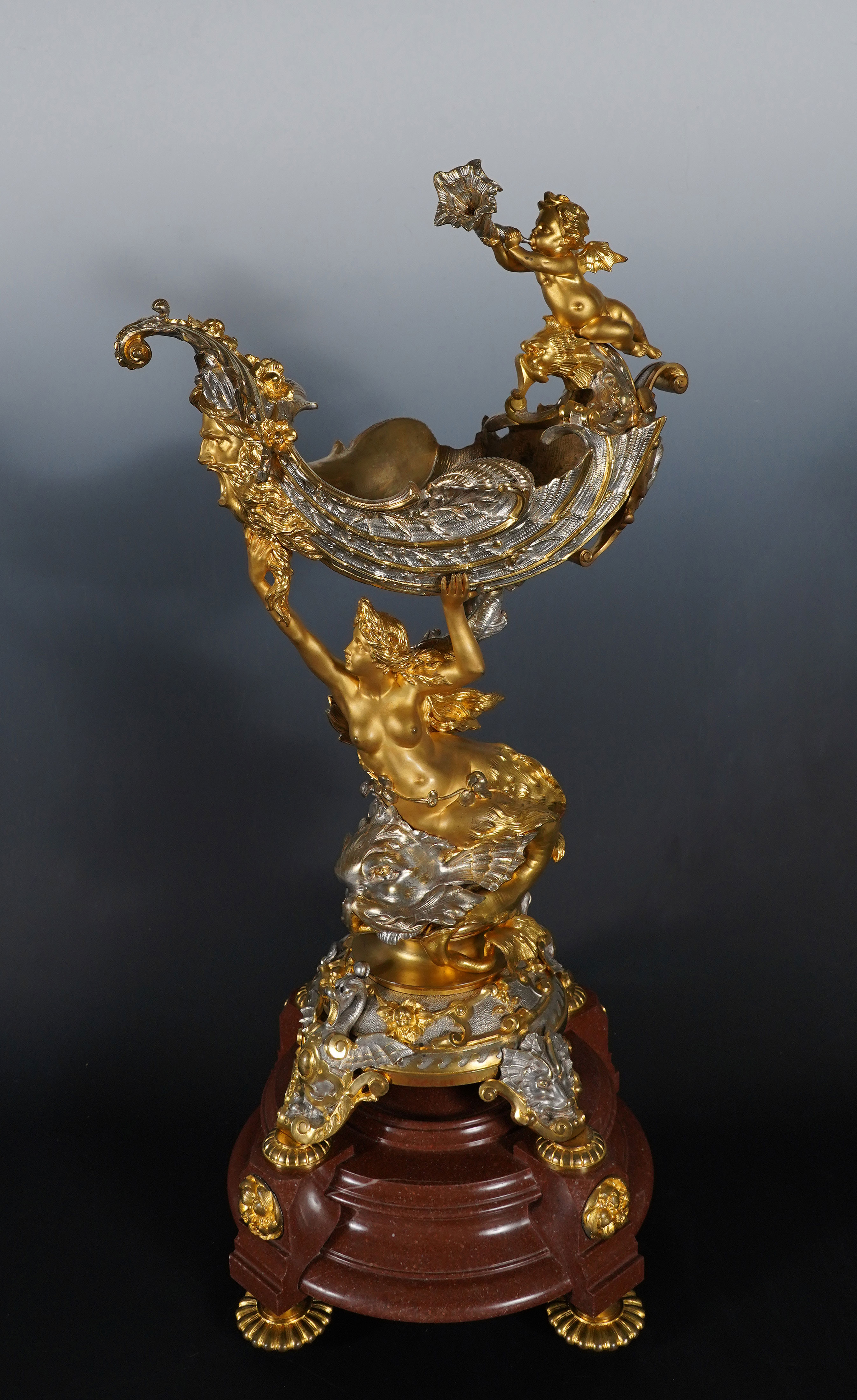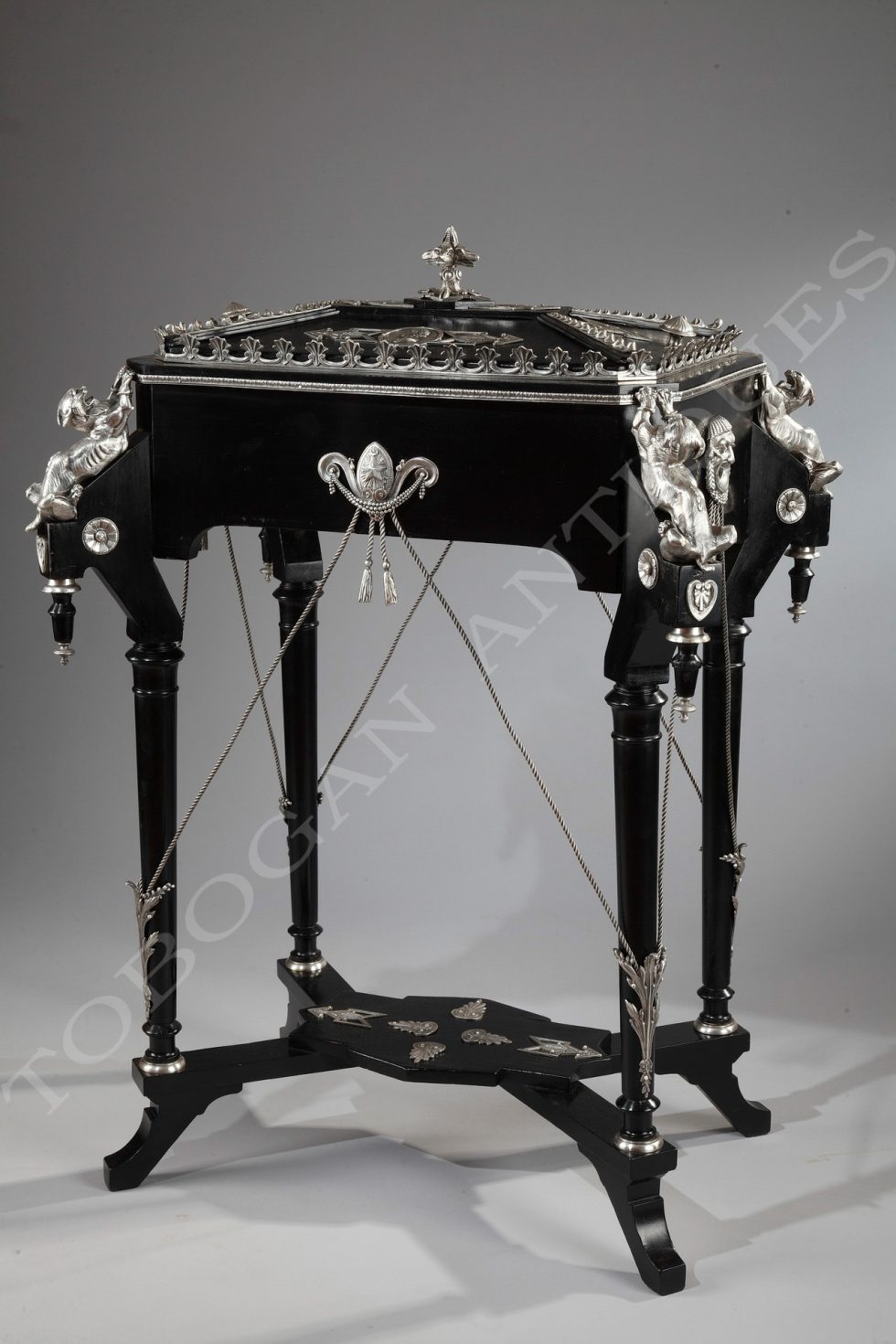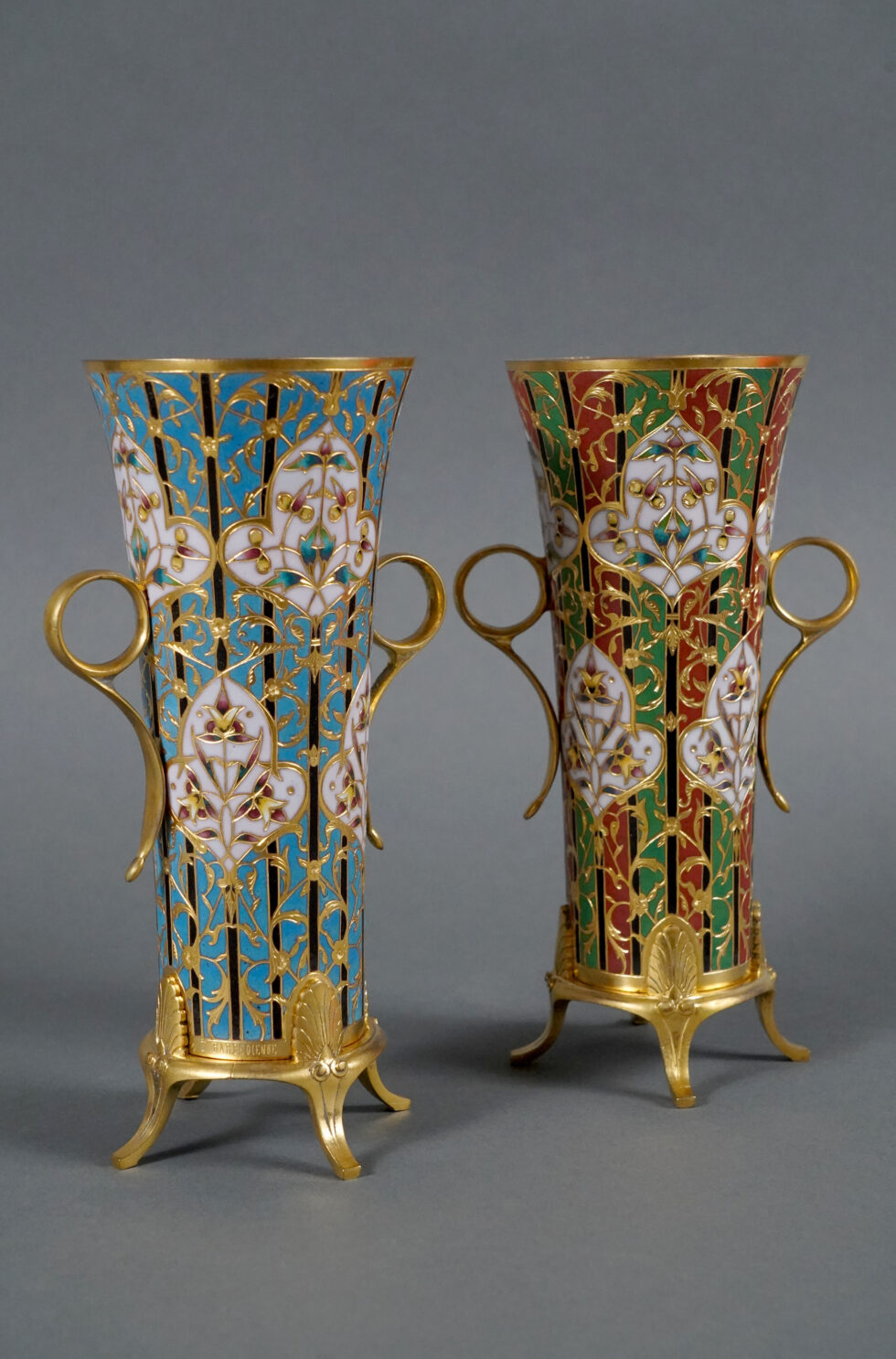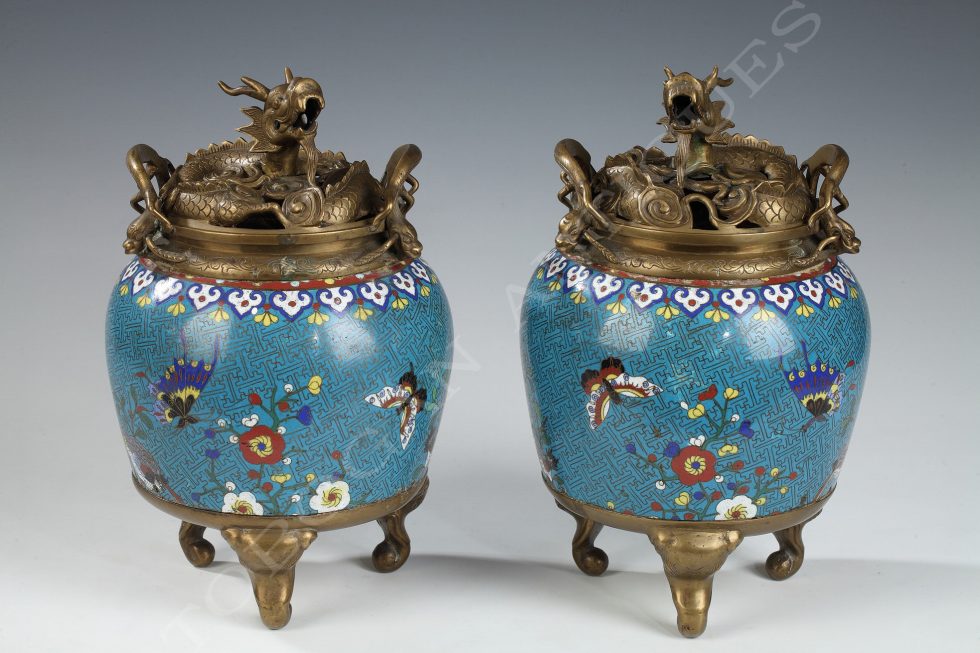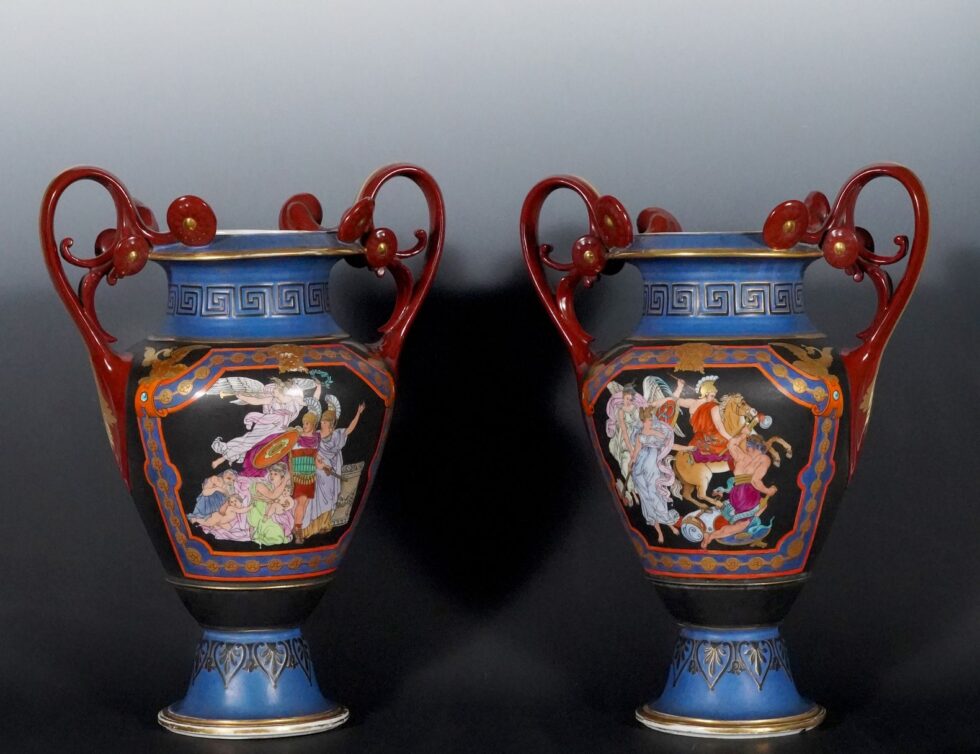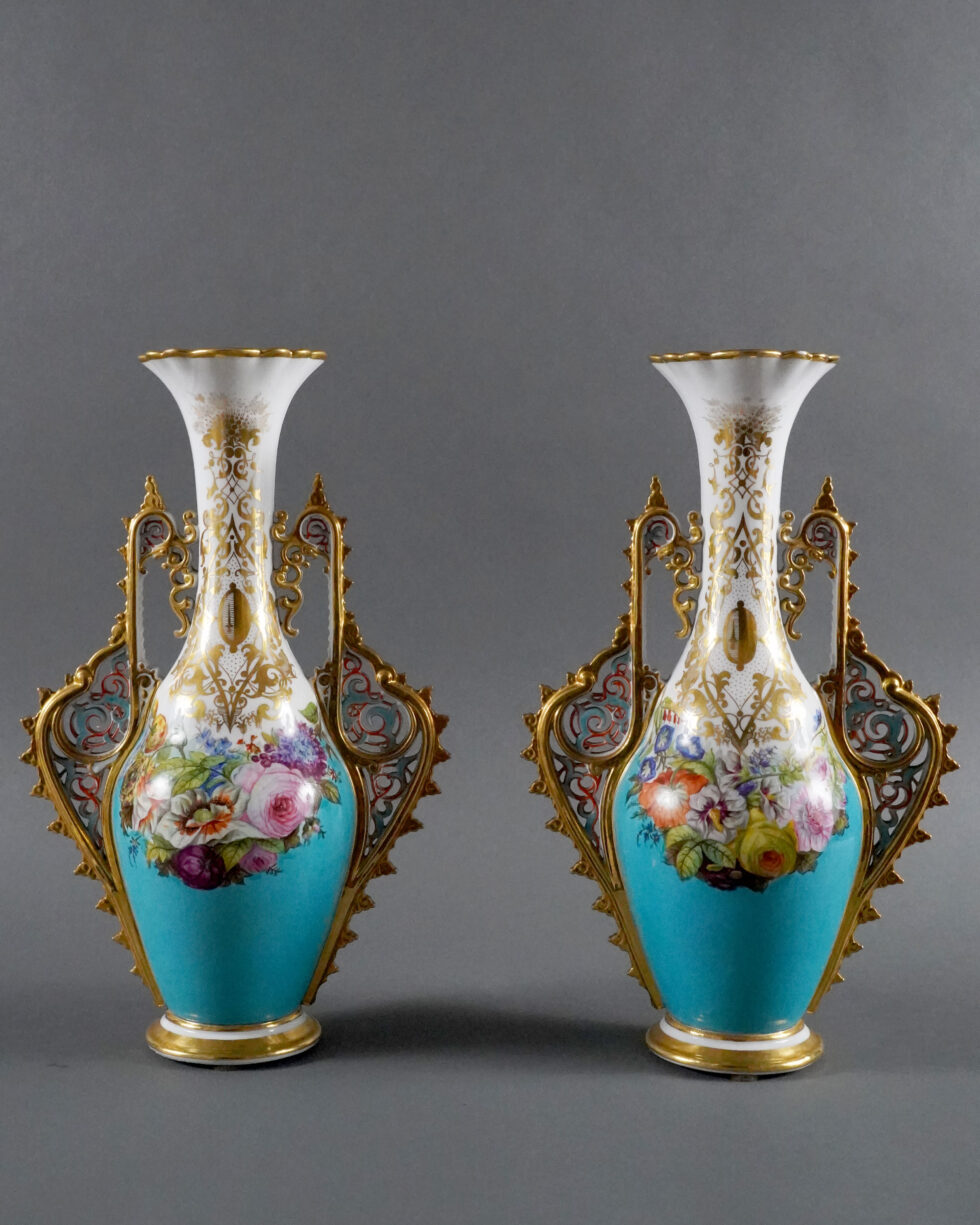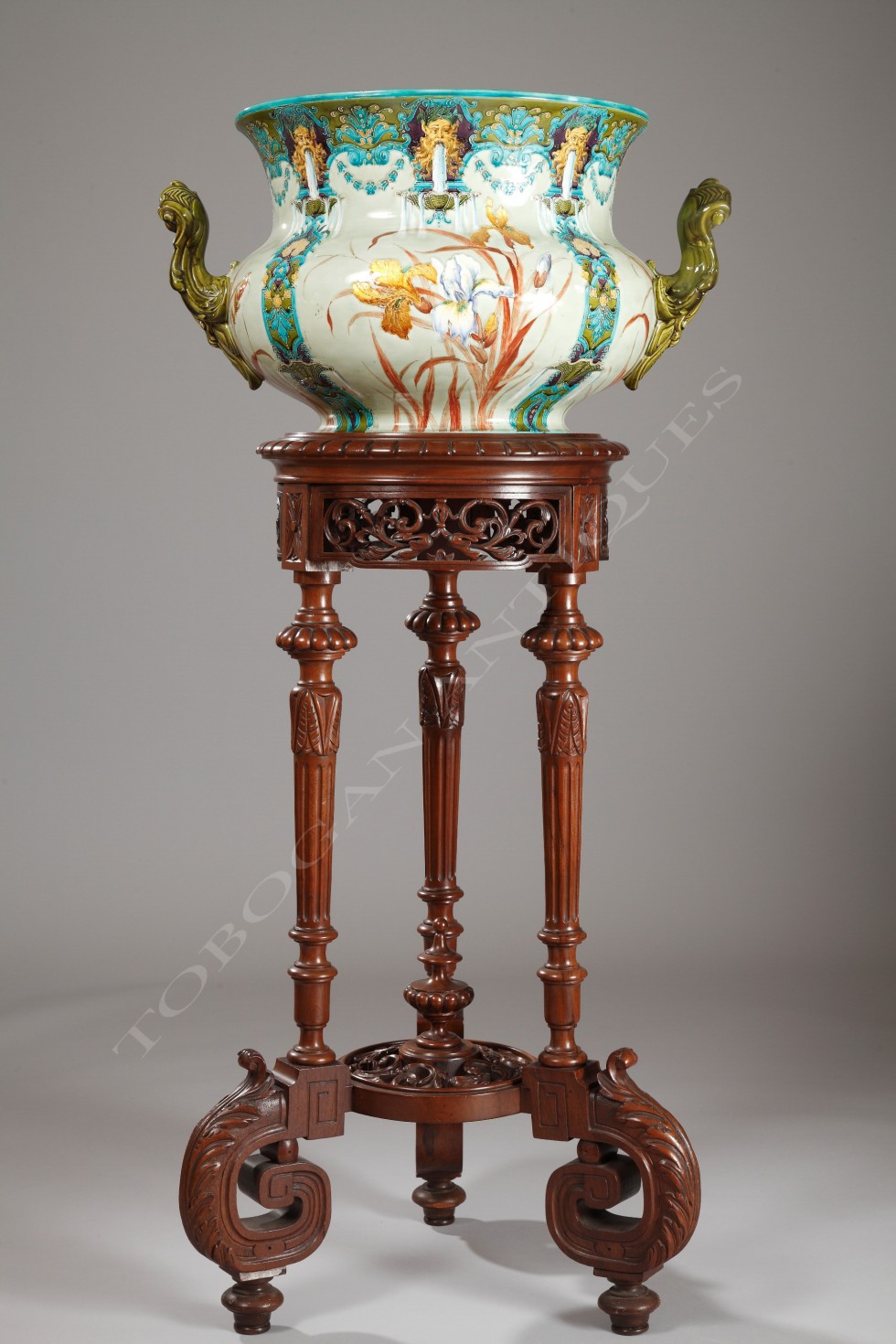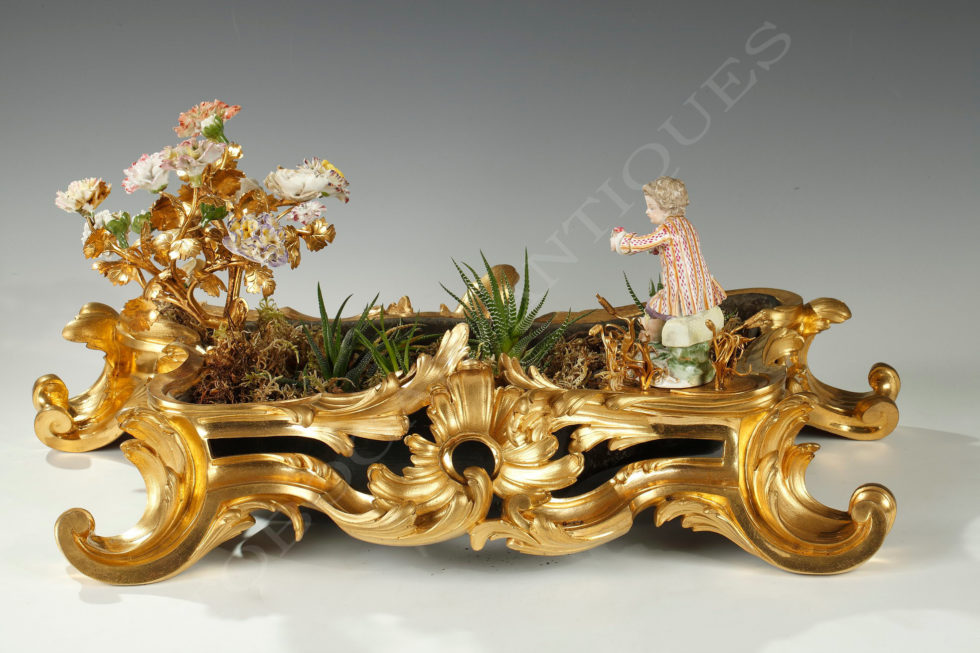G. Denière
Bronze-caster
(1815-1903)
(attributed to)
« The Naiad »
France
Circa 1870
Silvered and gilded bronze, Porphyry marble
Height : 68 cm (26,7 in.) ; Width : 34 cm (13,4 in.) ; Depth : 31 cm (12,2 in.)
Exceptional centerpiece in silvered and gilded bronze, composed of a naiad riding a dolphin, supporting a chiseled shell decorated with reeds, adorned with the head of a river god on its bow and on which a winged love blows in a conch. The whole rests on a pedestal decorated with dolphin heads and cut-out leathers, ending with a porphyry base with molded steps.
historical and artistic context
Centers and naves of tables are attested in France from the Middle Ages in order to present spices and other condiments brought from distant lands around the Mediterranean or from the trade of the Silk Roads. The importance of their presence on prestigious tables will be confirmed throughout the decorative arts, evolving during the 19th century in centerpieces, becoming a central element of decoration.
Here we find a true virtuosity in the composition and representation of the human figure which is reminiscent of the greatest artists of the Italian Renaissance. Indeed, the fluidity of the lines of the naiad can be compared to the nymph of Fontainebleau by Benvenuto Cellini preserved at the Louvre museum and dated 1545, while the naturalist representation of the marine setting refers to the work of Wenzel Jamnitzer such as his writing desk decorated with naturalist shells kept at the Kunsthistorisches Museum in Wien.
This nave is an artistic manifesto of bronze-making know-how in France at the end of the 19th century and is most likely the work of the bronze-maker Denière, a student of Aimé Chenavard.
Related work
A close example concerning the female figure on a pair of naves from the mid-19th century is kept in a private collection.
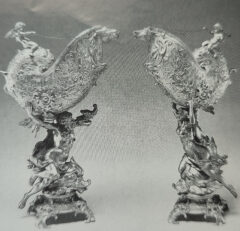
Biography
Guillaume Denière (1815-1903) was the pupil of the famous ornementalist Aimé Chenavard (1798-1838) and of the architect Henri Labrouste (1801-1875). In 1844, Denière succeeded his father in the family workshop, established in 1804, at 15, rue Vivienne in Paris. The business was at this time prosperous and four hundred workers worked to satisfy the numerous commissions from King Louis-Philippe and the upper classes. He made bronze furnishings, candelabras and centrepieces. He collaborated with a number of artists, amongst whom Carrier-Belleuse (1848-1913) and Constant Sévin (1821-1888). He turned out several clocks for the Tuileries Palace in 1852, as well as a ‘globe’ clock with rotating dials for the Grand Salon of the Château of Bagatelle. Denière’s work was very often remarked upon at the Universal Exhibitions, so much so in fact that the Emporer Napoleon III bought, at the Paris Exhibition of 1867, a clock set. His renown was by this point international. Amongst his most prestigious commissions, Denière produced 1854 a spectacular bronze centrepiece for the Russian ambassador, Kisselef, and decorative bronzes for the Viceroy of Egypt, Saïd Pacha, as well as railings for the Throne Room for the King of Cambodia, Norodom I, in 1862. At the 1889 Universal Exhibition G. Denière won a gold medal.
Contact us
Tobogan Newsletter
If you want to be up-to-date with our new acquirings you can sign up to our newsletter.

